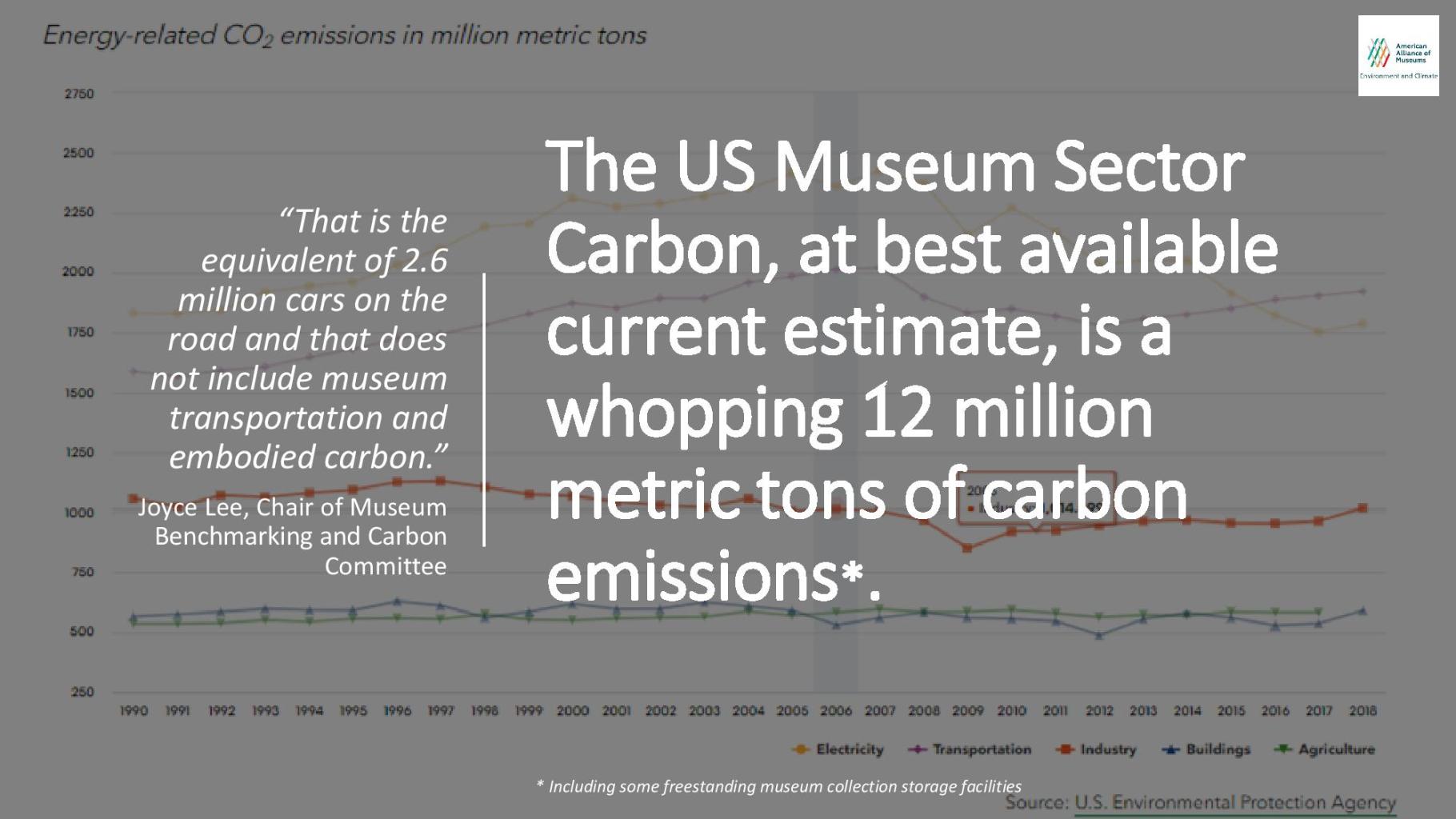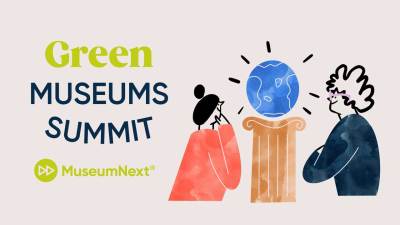
In 2020, Earth Day falls during a time when much of the coronavirus-stricken world is staying at home. Every part of the global community is impacted, and museums have been hit particularly hard.
Meanwhile, we find ourselves living in a time when we must take on two vital tasks simultaneously—battling the acute trauma of COVID-19 while addressing the chronic crisis of climate change. The two are interrelated: scientists have discussed the correlation between the warming climate and new diseases, and there is no doubt that more research is forthcoming to articulate this link.
As we think about how to protect the environment and our health, we can celebrate the fiftieth anniversary of Earth Day (April 22), a global celebration of Earth’s precious and finite resources. It is an opportunity to remember that we are caretakers of nature, just as we are caretakers of culture. Many museums have joined the global environmental movement to go green, setting new milestones in exhibit outreach, educational offerings, electronic communication, and building design and operation.
One way to do this is by committing to Leadership for Energy and Environmental Design (LEED), an international building standard measuring achievement in multiple environmental categories. There are LEED buildings in over 165 countries. About 150 museums around the world have earned the certification, as seen in the LEED museum database, and approximately three hundred more have registered to go green. This is quite a feat for a complex building type. Are you on the list?
Skip over related stories to continue reading articleAnother thing to consider is carbon emissions. This year, the National Oceanic and Atmosphere Administration (NOAA) recorded carbon levels at 414.50 parts per million (PPM), up from a preindustrial level of 280 PPM over the past eight-hundred thousand years. In the US, the growing number of municipalities that require energy benchmarking has spurred the recognition of museums as intensive carbon emitters. If you are in a city with such laws, you only need to talk to your neighbor about your bills and EUI (Energy Use Intensity) to know the outliers of the curve. As a leadership move, the American Institute of Architects has adopted the AIA 2030 Commitment to tackle net-zero cultural buildings.
Travel is also a major emitter of carbon, including the usual global movement of museum personnel. Now that this has come to a halt, as well as other day-to-day polluting activities, many metric tons of carbon are being saved. Some countries are seeing blue skies again. If there is a silver lining to this pandemic, it may be the understanding of what we can live without. Are clear skies and commerce mutually exclusive? Carbon offsets, tree planting, and reforestation are established programs for the museum industry to consider.

While museums are closed, we could use this window to revisit operational assumptions and their carbon implications. This is an especially valuable exercise during this difficult time, as saving carbon can lower financial expenses for the museum. Here are a few considerations:
- Find the appropriate lighting, temperature, and humidity control for near-zero occupancy. While most museums are still running their systems during the shutdown, cost-saving measures could be undertaken. Revisit every functional area to determine the range of temperature and humidity levels that could deviate from 70°F and 50% relative humidity (ASHRAE Chapter 24). If there are day- and night-time set points, consider moving towards the latter seven days a week. Unplug idle digital displays, refrigerators, computer terminals, and close air dampers after staff evaluation. Your utility bills should reflect major lighting savings, in addition to other energy savings.
- Consider special items to be moved to specific areas. Consolidation can enable selective galleries’ set points be modulated with professional advice. While spatial configuration and human resource dictates the feasibility of this strategy, it is an important assessment for prolonged closure. During the hurricane and power outage in Puerto Rico, artwork was moved to a few central areas with constant humidity control. Localized microclimate control display is a common practice in many institutions already.
- Confirm ongoing filter maintenance. Keeping air clean during a pandemic seems obvious, but filter maintenance practices vary from building to building. There is evidence infectious disease transmission could occur through the airborne route. Properly installed, well-sealed, and well-maintained filters in mechanical systems can enhance the treatment of recirculated air. While MERV13 plus filters are recommended, a high-pressure drop filter not designed for the system can also diminish the amount of air supplied into the environment, making the filter less effective as well as causing other issues with the HVAC system.
- Reduce water and fire hazard. Water leaks in empty buildings are not uncommon and should therefore become part of staff reporting protocols when they visit the premise. When the cleaning frequency is relaxed, bathroom fixtures’ performance and slow leaks are to be checked routinely. Shutting off water supply is one option in certain museums. Monitor temperature sensors, fire alarm performance, and sprinklers’ readiness. Communications with building neighbors during this period cannot be overemphasized, as a nearby fire and flood could easily impact your property.
- Revisit security protocols and insurance policy. Having staff work off-site during the closure could pose risks for the collection. The rotational staff on site should follow an inspection list with a reporting protocol. Reduce trash hauling and associated service calls. Review your insurance policy and discuss specific clauses that could impact the museum during this unusual time. Communicate with your local fire and police departments about your empty building with a valuable collection. Ensure all surveillance equipment is working at peak performance. Monitor broken windows, vandalism, and irregular vehicle activities on site.
While every museum and every collection is different, the precautionary principles are universal. They are also a chance to plan judiciously for the future, as these efficiency improvements will lower annual operating expenses.
Over the centuries, museums have borne witness to all manner of turmoil and hardship, reflecting the best of the human spirit. The cultural sector will rise again, reemerging as more resilient, wiser, and stronger than ever before. Perhaps they can be greener as well.
Happy fiftieth birthday, Earth Day!
About the author:
Joyce S. Lee, FAIA, LEED Fellow, is president of IndigoJLD, providing green health consulting, design, benchmarking, and planning services on exemplary projects. Joyce served under Mayors Giuliani and Bloomberg as Chief Architect at the New York City OMB. Her work has received numerous awards, such as those from the American Institute of Architects, US EPA, and the Robert Wood Johnson Foundation. Contact: Info@IndigoJLD.com @museumsforparis
The author would like to thank her engineering colleagues for their review.









All great considerations while museums are closed, but just as good during normal course of business…
Excellent advice during this crisis and for ongoing operations for all cultural heritage institutions, including museums, collections storage facilities, archives, and special collections.
The author makes excellent points. Museums can learn from the pandemic and become greener and more sustainable in the future.
Nice article. I can particularly identify with being able to see the blue sky over Manhattan from the Ridge of Ridgewood, NJ!
We are looking forward to delving deeper into this topic in a webinar hosted by PA Museums on May 14th!
Fantastic article. As an avid supporter of the arts and green economy, I can see museums of the world leading the way to re-imagine how we can achieve net zero through more comprehensive sustainable and educational goals.
Thank you Tracey. The registration link is:
https://pamuseums.wildapricot.org/events
Well said! Museums serve an important purpose as caretakers of culture. They can and should act as caretakers of nature and the environment.
Great article, Joyce. Always interesting to hear your perspective.
Important considerations to keep in mind as we think about how to adjust and learn from the current circumstances – thank you!
Museums should be leaders in the movement to a sustainable future – I hope that continued efforts such as benchmarking and transparency as well as lessons from the lockdown can lead to greener operations and policies. Excellent article!